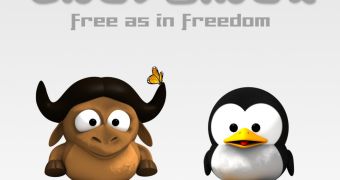The third version of the famous GNU General Public License (GPL) was proposed by the Free Software Foundation as an assurance for the users who modify the free software on their personal and household devices, granting them patent licenses. It should also extend the compatibility with the other free software licenses and increase international uniformity.
Even though many considered it unnecessary, claiming that the GPLv2 does its job perfectly, the FSF continued with this project, and yesterday they've finally released it. Some important software vendors have already expressed their interest in adopting this license, as for example, the Samba Group for its CIFS (Common Internet File System) Windows compatible file and print server program. Jeremy Allison, Samba team spokesperson, states:
".. [GPLv3] is a great improvement on the older GPL ; ? it is a necessary update to deal with the new threats to free software that have emerged since version 2 of the GPL."
Sunt Microsystems has also made some statements claiming that they consider placing their OpenSolaris under the GPLv3, but there is nothing sure in this yet. GNU developer and Texinfo maintainer Karl Berry stated:
"the GPL is the fundamental license that ties the free software community together, and version 3 does an excellent job of updating the license to the present-day computing reality ?"
There is also the other group, which totally dislikes GPL3. Among them, there is also Linus Torvalds and the entire Linux kernel developers team. At the Linux Foundation Collaboration Summit which took place at Googleplex, some leading Linux kernel developers stated they see no reason to switch to the third version of the free software license.
However, they've put a lot of effort into making this license version available, that 's for sure. People with a lot of experience in software license law and advocacy have debated, and examined it. The one aspect that discontented most of the open source community related to this release would be the fact that it brings the restrictions to a higher level than the former Free Software Foundation-approved software licenses. But according to FSF, the new restrictions in the GPLv3, targeting patents, patent licensing, and hardware capabilities, were introduced to make the user and developer more freer.
The FSF also said that this GPL upgrade comes to shed some light on areas such as tivoization or Treacherous -Trusted- Computing. According to them, GPLv3 does not forbid the DRM (Digital Restrictions Management) and does not impose any either restriction in a program's features; it just prohibits the use of tivoization and Treacherous Computing to stop users from changing the software.

 14 DAY TRIAL //
14 DAY TRIAL //